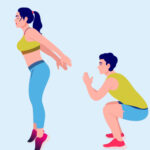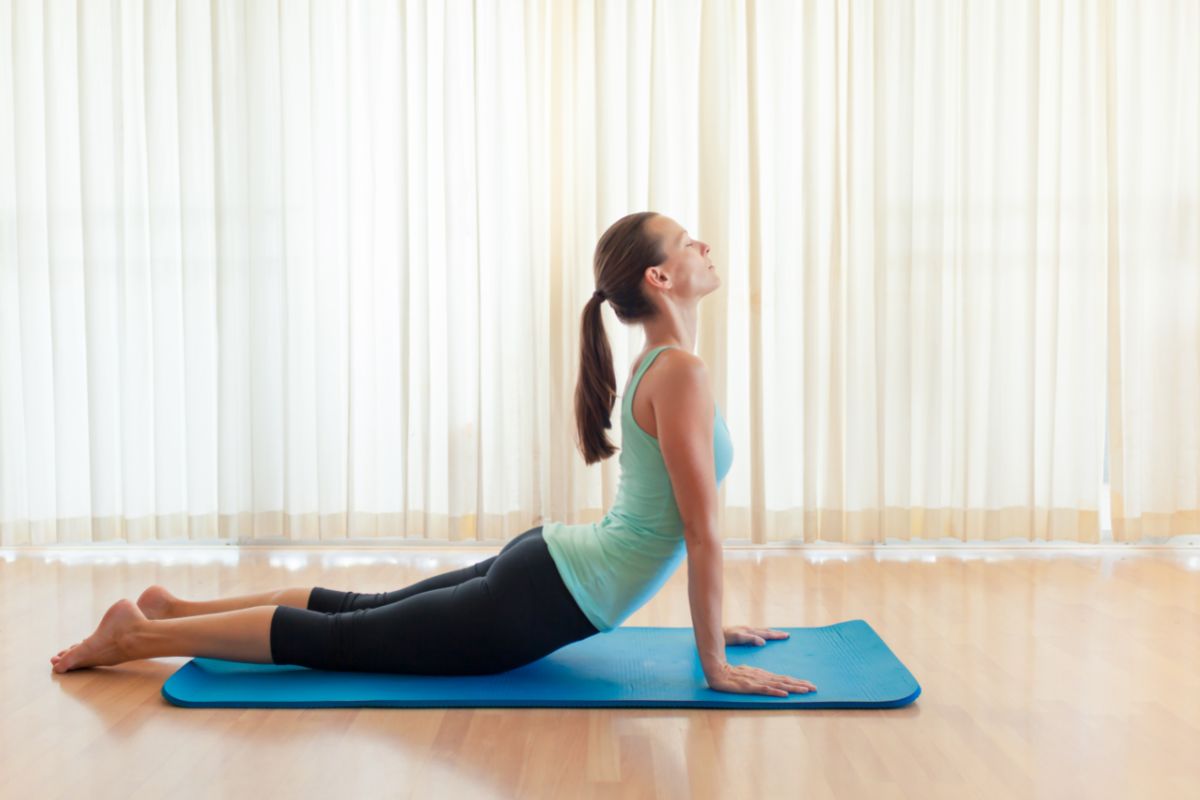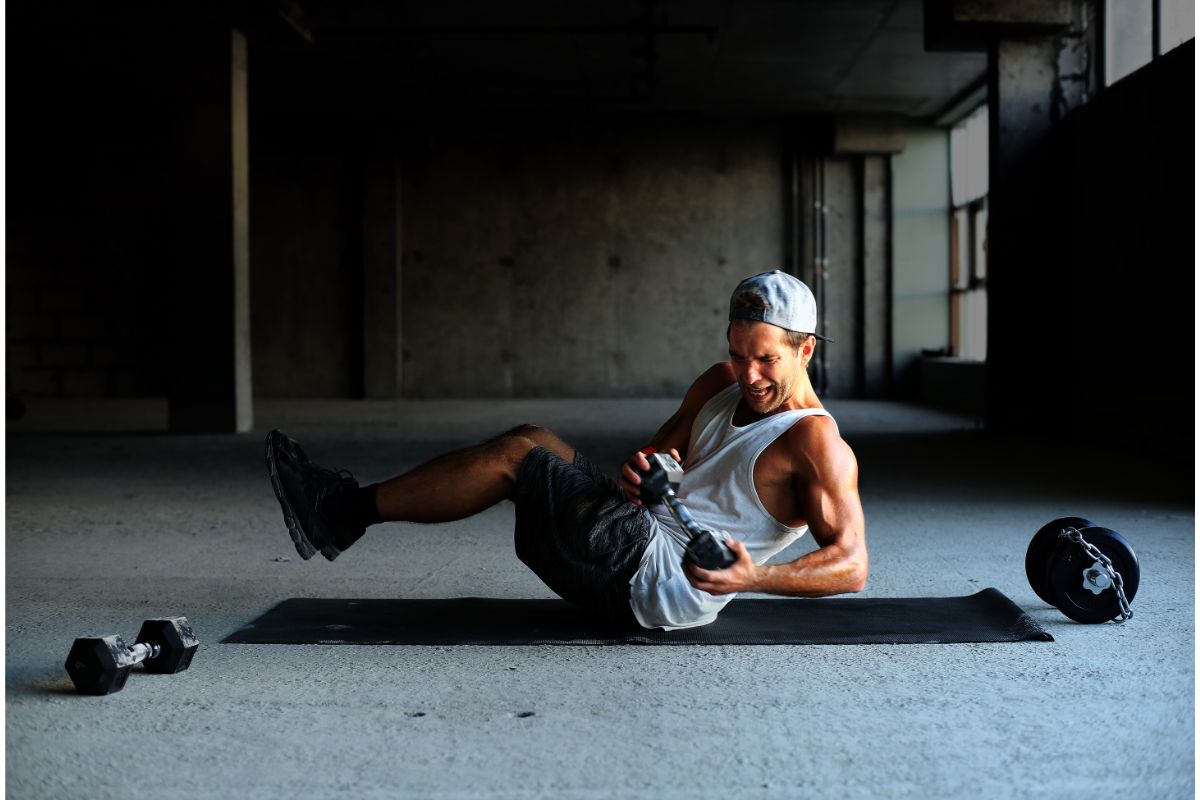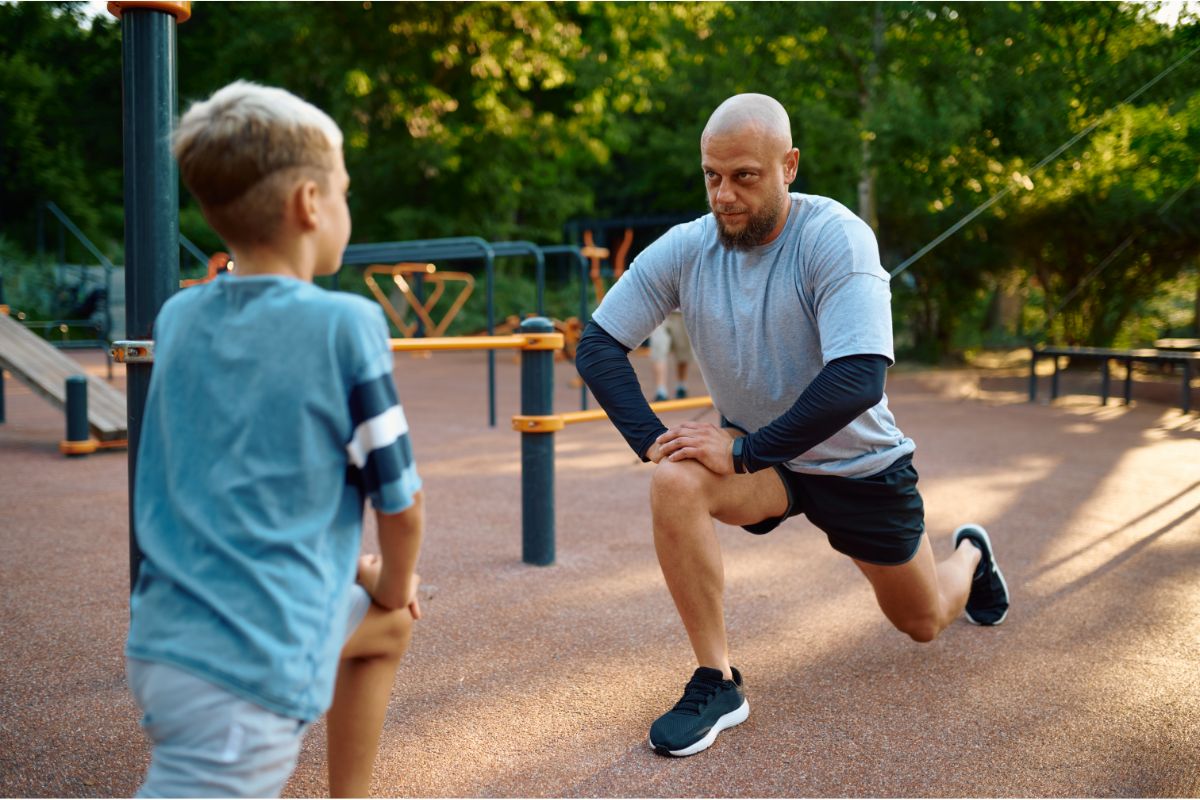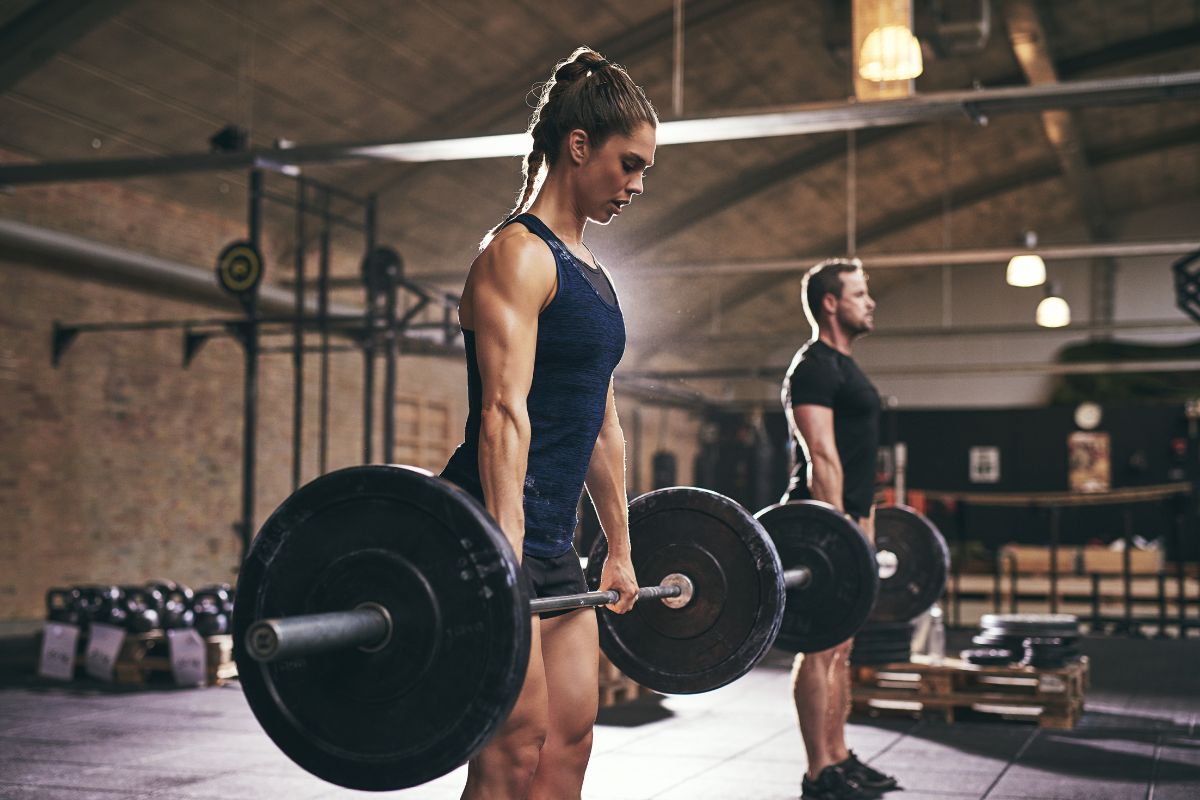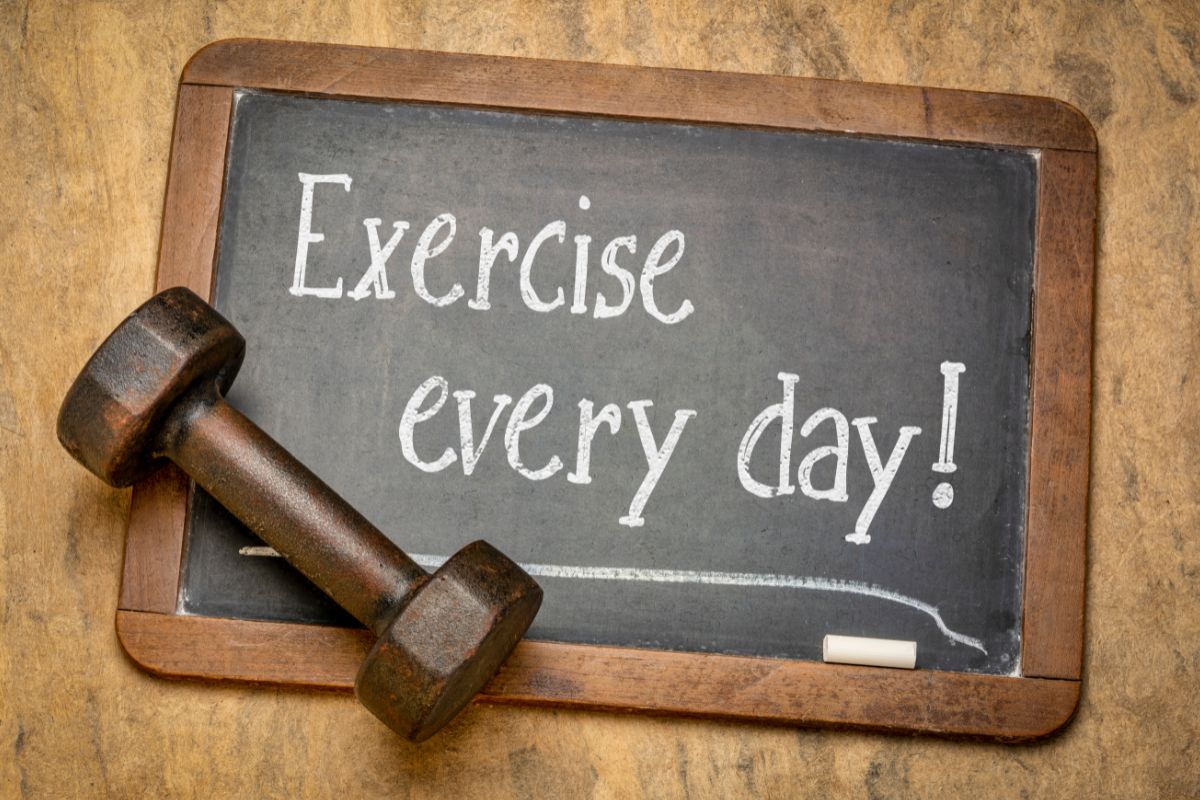Last Updated on December 7, 2022 by TJ Daniels, Certified Personal Trainer
Have you ever heard the expression “there isn’t a finish line when it comes to fitness?”. It’s difficult to argue that quality of life and longevity shouldn’t be at the top of everyone’s priority list.
However, our approach to workouts in our 20’s and 30’s should be much different than in our 40’s and 50’s.
The skeletal muscle is affected by aging as are all other organs and systems in the body. As we get older, our muscles undergo progressive changes, the most noticeable of which is a loss of muscle mass and strength.
Muscle mass loss during the aging process is clinically significant because it reduces strength and exercise capacity, both of which are required to perform daily activities.


Sarcopenia, or age-related muscle loss, is a normal part of aging.
After the age of 30, you begin to lose as much as 3% to 5% per decade. During a lifetime, most men and women will lose approximately 30% of their muscle mass.
Due to the amount of lubricating fluid inside the joints decreasing and the cartilage thinning with age, it makes the movement of joints much stiffer.
Many of these age-related changes in joints are the result of inactivity. Movement of the joint and the associated stress of movement aids in the movement of the fluid.
Inactivity causes cartilage to shrink and stiffen, limiting joint mobility.
Therefore, it is very important that we stay fit as we get older, and here are some of the best ways to do that – no matter what your age.
Why Exercise Is Important As You Get Older
Exercise can both prevent, and in many cases reverse, many age-related changes to muscles, joints, and bones. It is never too late to begin enjoying the benefits of an active lifestyle.
Consult your doctor before beginning any new physical activity regime. If you haven’t exercised in a long time, are elderly, or have a chronic disease, your doctor can assist you in designing an appropriate and safe exercise program.


Improves Mental Health
Exercising has lots of mental health benefits. Endorphins are released during exercise, which is a stress reliever and leaves you happy and energized.
Furthermore, exercise has been linked to better sleep, which is especially important for older adults who frequently struggle with insomnia.
Lowers Risk Of Disease
Regular exercise has been shown in studies to help prevent many diseases, including diabetes and heart disease.
Exercise increases overall immune function, which is even more important for older individuals as their immune systems are more frequently compromised.
Improves Strength And Flexibility
Falling is more common in older adults, which can be detrimental to keeping their independence.
Exercise improves flexibility and strength, which in turn helps balance and coordination, making a fall less likely.
Older individuals are not as good at bouncing back after falls, so anything that helps prevent them from falling in the first place is critical.


Improves Cognitive Function
Lots of studies show that those who are physically active have a lower risk of developing conditions such as dementia, regardless of when they start a routine.
Exercise appears to benefit the brain not only by increasing blood flow but also by boosting the chemicals that protect the brain.
Exercise also helps to compensate for some of the normal declines in brain connections that occurs with age.
Gets You Out And About
Exercise can be a fun social opportunity by joining a walking group or attending group fitness classes.
I’m sure everyone knows that it is great for aging adults to keep strong social ties in order to maintain a sense of purpose and avoid feelings of depression and loneliness.
However, it is even better if you do an exercise that you enjoy and are motivated to do.
This makes it easier to get to know people as you will all have a common interest in the sport in common, giving each other motivation to attend the classes and events.
Fitness Tips For Your 30s
In your 30s, life becomes more complicated. You’ve maybe started a family and taken on more responsibility at work. Not only is it difficult to find time to train, but the training itself is becoming more difficult.
Your metabolism begins to slow and you begin to gain body fat more quickly than before. Strength training should be an important part of any workout routine to combat this.
Weighted movement with resistance aids in muscle development. These more powerful muscle cells significantly increase basal metabolic burn, making it easier to stay fit.
Shorter sessions will be more rewarding and feasible, allowing for adequate rest time between sessions.


Fitness Tips For Your 40s
Chronic diseases such as diabetes and high blood pressure are more likely to develop in your forties.
Exercise, in conjunction with a healthy diet and adequate sleep, serves as a form of preventative medicine in the fight against these diseases.
To prevent sarcopenia (loss of muscle tissue as a natural part of aging) and osteoporosis (when bones become brittle and fragile), regular resistance training and appropriate loading activities, such as running and hiking, are essential.
Fitness Tips For Your 50s
With dwindling bone density and muscle mass, your joints are the most troublesome at this age.
This is when you need to start to incorporating balance training into your routine to avoid falls and fractures.
The quality of your training is more important to you at this age. This entails performing exercises more slowly, with proper form, and ensuring you are incorporating the full range of motion into your exercises.
At this age, regular resistance training is your best friend. Include at least three sessions per week in your routine to compensate for the loss of muscle mass and bone density.
Concentrate on functional movement patterns that make performing daily tasks easier.
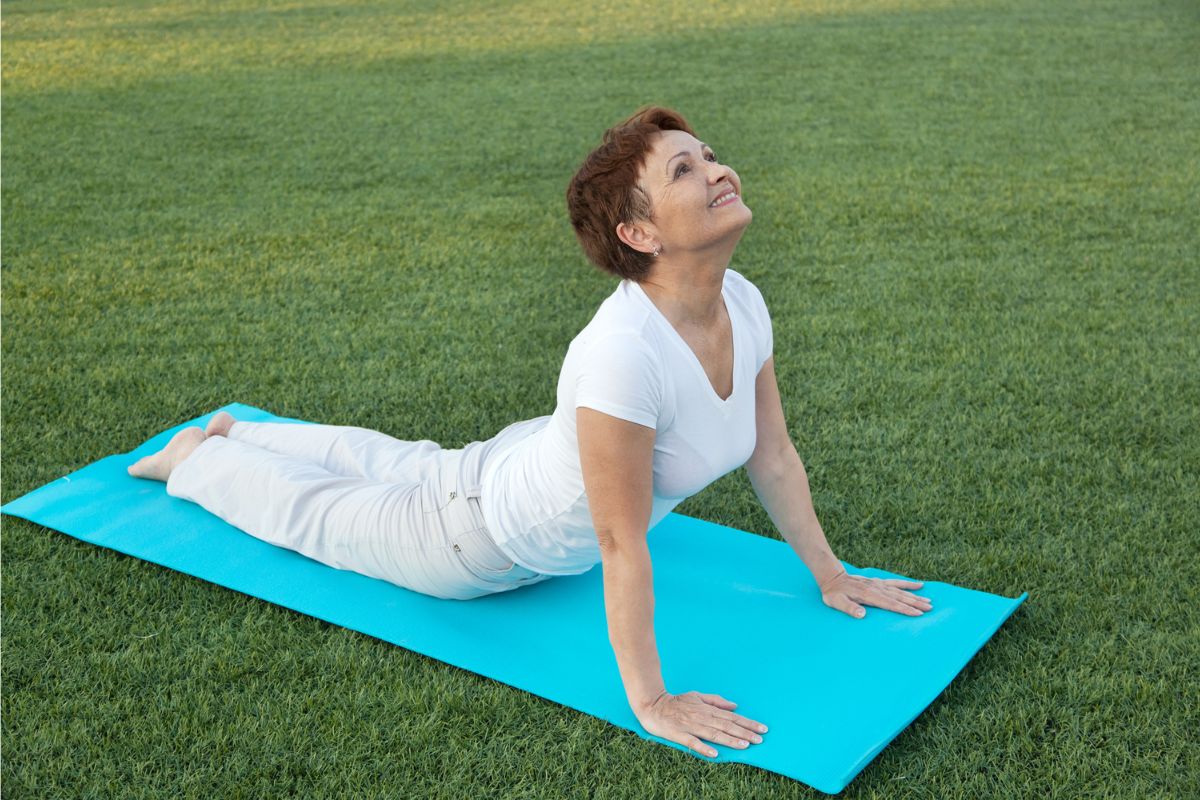

Preventing Injury From Exercise
Warm-up
Tendons and muscles lose flexibility and are more prone to injury as we age. A solid 5 to 10-minute warmup of light motion and dynamic stretches will get your muscles and joints nice and ready for your workout.
Try to avoid static stretching, which is stationary stretching, which can be harmful, especially as you age.
We all need to stop thinking of the warmup as something you do before the workout and start thinking of it as the first part of the workout.
Stretch
Flexible muscles and strong joints will keep you from suffering a sidelining injury from which you may never fully recover.
The best way to avoid an injury is to include a 5 to 10-minute cooldown stretching routine at the end of your workout. Stretching while muscles are warm increases flexibility and force. Make the most of it.
Know Your Limits
Working on your fitness is always a good idea, but knowing when you’re working out too hard is essential for proper muscle building and recovery.
Recovery days are essential for maintaining muscle and fitness growth.
You put yourself at risk of injury if you do not allow your body to recover properly.
Be sure to incorporate at least one or two rest or light-intensity days per week into your regimen.
Summary
Our bodies change as we get older, whether we like it or not. But keeping fit will allow us to maintain a body that is healthy and one that will be able to carry us throughout our years.
Regular exercise also increases strength and flexibility which reduces the risk of falls – a very serious thing that happens to a lot of seniors.
Exercising throughout our 30s, 40s, 50s, and beyond will help prevent disease and will also improve your mental health.
Good luck on your journey, and remember, there is no finish line!
- How To Start HIIT Workouts [Beginner’s Guide] - May 18, 2023
- How To Sneak A Workout In While Taking Care Of Your Baby - March 17, 2023
- How To Build Your Chest With Dumbbells [Guide] - February 9, 2023

